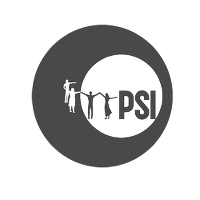By Antonia Wulff, Education International
For about 12 hours there was a target on education financing in what was about to become the 2030 Agenda. It was proposed in the very last round of negotiations of the Open Working Group on Sustainable Development Goals and it did not take long before it was shot down; Member States said it was not feasible to prescribe percentages of public spending to the different goals, and that it would place the goals in competition with each other. Subsequent Financing for Development negotiations saw Member States reject the proposed commitment to “setting nationally appropriate spending targets on essential services, including education…”, shocking the Norwegian co-facilitator, who said he thought education financing was uncontroversial.
On the surface, education is an indisputable development priority and an obvious item on any government budget. Yet, at the end of the MDG era, it was clear that the lack of financing was one of the main reasons behind lagging progress in achieving universal primary education. Aid to education has dropped many years in a row, amounting to 6.9 percent in 2015, and only 2.7 percent of humanitarian aid is directed to education. [fn] UNESCO (2017). [/fn]
This is despite the commitment made in the year 2000 that no country with a credible national education plan would be held back due to a lack of financing, the basis for what today is the Global Partnership for Education (GPE). At its replenishment in February 2018, the GPE failed to meet its target of US$ 3.1 billion for the coming years. This, despite the pleas of both Rihanna and Emmanuel Macron.
In the past two years, two high-profile initiatives were expected to propose solutions to the financing conundrum: the so-called International Commission on Financing Global Education Opportunity, and the World Bank’s World Development Report 2018. Bizarrely, both said more about why education should be financed rather than how.
The situation is sobering. And it leaves education advocates in a frustrating position of having to choose between carrying on with the same advocacy messages as 25 years ago, talking to the same deaf ears, while reporting ever-more worrying trends and statistics, or – and this may be even more worrying – allowing ourselves to be charmed by the different efforts to give the emperor some new clothes.
Many civil society actors have bought into the idea that the current financing challenge is too big for any State to handle, too big for the public sector to sort out on its own, effectively reinforcing the idea that the involvement of the private sector is necessary. These ideas have taken hold to the extent that the discussion is no longer about whether the private sector should contribute to education, but rather about how to maximize its participation and identify related best practices.
Radical notions of rethinking public revenue, spending and redistribution have been replaced by a pragmatic spiel about increased domestic resource mobilization, contributing to a convenient shift in the attribution of responsibilities, whereby (poor) countries are now responsible for their own progress. Moreover, while public goods should of course be financed from domestic resources, this discourse conveniently neglects the systemic nature which makes it an impossible solution for many countries; for instance, the effectiveness of tax policy depends in part on the extent to which a State is able to control its capital flows.
While the financing gap persists, the lay of the land has changed considerably in recent years: put simply, capital is the new State, and data is the new capital. Long before SDG 4 on education entered the global arena, data started to be framed as the tool for figuring out how to allocate money, where to save money and which measures yield the best results. The SDG 4 architecture builds on this discourse and, importantly, on its implicit assumptions of education currently being inefficient, and of it being possible for all processes of teaching and learning being standardized, measured and turn into data – data through which one can measure the efforts of students, teachers and systems as a whole.
There are two problems here: first, the costs of the data required to monitor the implementation of SDG 4 are estimated to be US$ 1.35 million per country and per year, or US$ 280 million globally per year. [fn] UNESCO/UNESCO Institute for Statistics (2018), p. 3. [/fn] This effectively means that there is a trade-off between implementing the goal and collecting the data. Second, financing, thus far, has been disproportionately allocated to one specific part of the goal, namely, the measurement of learning outcomes and the development of global learning metrics.
Again, this is no coincidence; across the globe we see an increase in large-scale standardized assessments, as for example, the OECD’s Programme for International Student Assessment (PISA). Such “test-based accountability schemes”, as some would call them, are costly to participate in but produce convenient rankings. However, there is no conclusive evidence on the de facto use of such assessments for improving policy or strengthening education systems.
This focus on standardized assessment data means that no money is left for the indicators with truly transformative potential, such as the thematic indicator on household spending on education, an area where data is urgently missing. Evidence suggests that household expenditure often is the main source of education financing in poorer countries, where households cover school fees, books and uniforms, among other things. Household expenditure may even amount to about half of public expenditure on education. [fn] Foko/Tiyab/Husson (2012). [/fn] With direct and indirect costs of education being the primary reason for parts of populations being excluded from education, data on household spending on education could help show the direct links between public financing and equitable access.
No quick wins
Among the proposed new ideas are various ‘innovative’ measures: the most grotesque I have come across so far perhaps being one to earmark the income from the VAT on tampons for girls’ education, that is, a regressive cash transfer where girls themselves pay through necessities that should be exempt from VAT in the first place. A great example of how desperate efforts to raise revenue may backfire and increase inequality.
A proposal that is enjoying stronger backing is an International Financing Facility for Education, designed to unlock supposed new sources of financing through the World Bank and regional development banks. [fn] International Commission on Financing Education Opportunity (2016). [/fn] It focuses on leveraging additional concessional financing for lower-middle income countries, which generally struggle to access loans. While there is a lot of buzz around this, there is no clarity on governance, strategies for debt sustainability or the de facto appetite from regional banks to step up their education financing.
For decades the education community has called for 6 percent of GDP and 20 percent of the national budget, respectively, to be allocated to education; the adoption of SDG 4 makes the demand for sufficient, predictable as well as publicly funded and regulated education ever-more pertinent, as also reflected in the Education 2030 Framework for Action. [fn] UNESCO (2015). [/fn] But the quest for sufficient public financing should not distract us from also engaging in a more sophisticated and sorely needed analysis of how money is raised and spent, and what current practices mean for the equity and inclusion of education systems. Without such an analysis we cannot deliver on SDG 4. And what is clearer than ever before is that education financing cannot be separated from the broader discussion about the financing of public goods and services, the regulation of private sector engagement, tax justice nationally and internationally, and debt sustainability.
Antonia Wulff is a Coordinator at Education International (EI), the world federation of teachers’ unions.
Foko, Borel/Tiyab, Beifith Kouak/Husson, Guillaume (2012): Household Education Spending. Dakar: UNESCO.
http://unesdoc.unesco.org/images/0021/002167/216719e.pdf
International Commission on Financing Education Opportunity (2016): The Learning Generation. New York.
http://report.educationcommission.org/report/
UNESCO (2017): Aid to Education Must Go Further to Reach Countries Most in Need. Global Education Monitoring Report Policy Paper 31. Paris.
http://unesdoc.unesco.org/images/0024/002495/249568e.pdf
UNESCO (2015): Education 2030 Framework for Action for the implementation of Sustainable Development Goal 4. Paris.
http://unesdoc.unesco.org/images/0024/002456/245656E.pdf
UNESCO/UNESCO Institute for Statistics (2018): The Investment Case for SDG 4 Data. Concept note. http://uis.unesco.org/sites/default/files/documents/investment-case-sdg4-data.pdf








